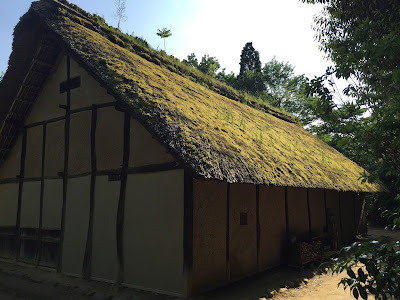It's typical in Japan that antique markets are held in Buddhist temples or Shinto shrines in weekends. Variety of things are sold at the markets: ceramics, lacquered wood carvings, kimonos / fabrics, calligraphy goods, religious sculptures, and etc... Today, I went to one of them at Arai Yakushi in Tokyo. This Buddhist temple has an antique market every 1st Sunday of the month. And, May sure is one of the best month to enjoy such event while enjoying mild spring weather.
This temple has a water well that is open to public. The water can be consumed for drinking. Here are some photos I took at the market. I didn't take much detailed photos of each booth, since to respect shopkeepers for not bothering their business by my paparazi-like attitude. But still, hope this informs the brief picture of how the Japanese antique markets look like, especially if you have never gone.
And, some more photos from the temple, outside of the shopkeepers' territories.
Lastly, this is the lunch I had near the temple afterward,
tororo soba.
Tororo, the white foamy matter seen in lower left, partially coverd by cut seaweed is a kind of yam.
It is very sticky as okra, and becomes foamy once shuredded.
Some other antique market sites in Tokyo city (23 wards) area, held at Shinto shirines / Buddhist temples are: Gogokuji (2nd Saturday of each month), Nogi Shrine (4th Sunday of each month), Yasukuni Shrine (Sundays, except for when the specific events are held, plus 3/27 and 4/3), Hanazono Shrine (Sundays, except for when the specific events are held), Kasai Shrine (1st Saturday of each month). It's always better to go to the markets in morning, since shopkeepers tend to close their booths from early afternoon.





















































